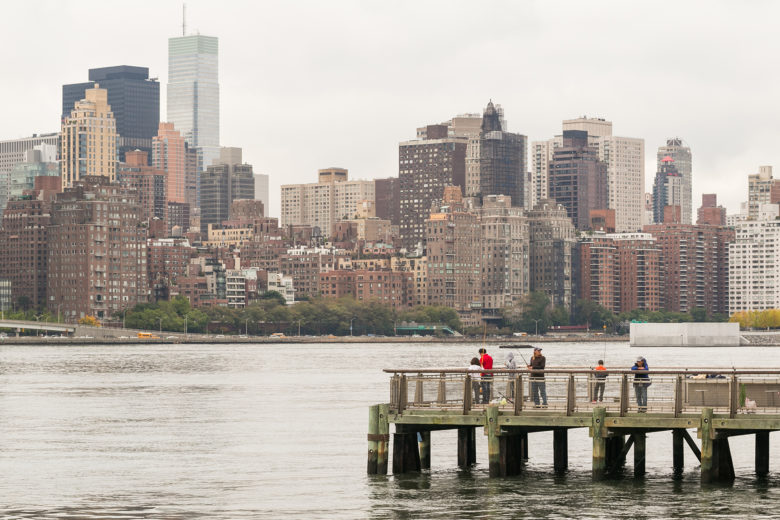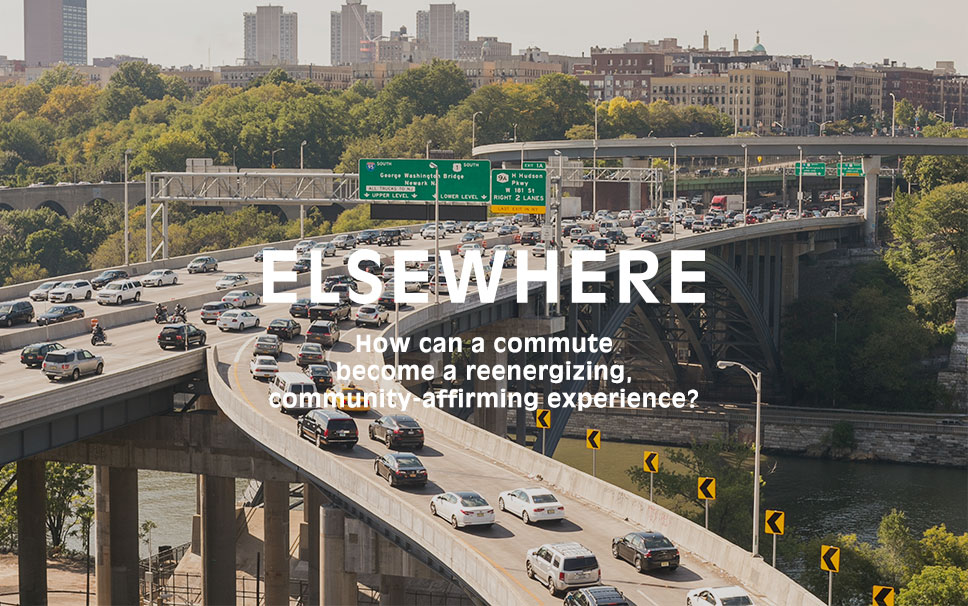About
Our fall 2014 programs investigated the city as a destination and departure point—from tourist visits and daily commutes to migrations from economic pressures and the search for better opportunities. We examined the complex flows of people through the city, and the diverse ways we experience coming and going.
The series was a continuation of Elsewhere: Escape and the Urban Landscape, a multi-year initiative of public programs, competitions, and research exploring escape in the urban environment.

Escape Routes: High Bridge History
December 14th, 2014
In 1899, Jesse Lynch Williams of Scribner’s Magazine wrote of High Bridge: “There is a different feeling in the air up along this best-known end of the city’s water-front…This is the tired city’s playground.” What can we learn about the social, cultural, and economic life of New York City by looking at a popular destination and great escape of the past? Moses Gates, an urban planner, licensed New York City tour guide, and visiting assistant professor of demography at the Pratt Institute, took us on a tour around High Bridge, which was a favorite destination for well-heeled Manhattanites at the turn of the century.

Door to Door: Neighborliness
December 13th, 2014
How can a commute become an energizing, community-affirming experience? Long commuting times are seen as one of the most robust predictors of social isolation. According to the political scientist Robert Putnam, every ten minutes spent commuting reduces a person’s social connections by ten percent.

Door to Door: Subway Games
December 13th, 2014
Can we use games to help us experience our commute with fresh eyes? We experienced three different visions for how play can transform the subway system and your structured, repetitious daily commute into something exciting. We invited three game design teams down into the subway system and asked them to create a game that transforms the experience of moving through the city.

Door to Door: Innovating the Commute
December 13th, 2014
How can we harness existing data to reimagine our transportation infrastructure without starting from scratch?We had a presentation of projects that used data to improve access to information and the commuter experience on a collective scale.

City of Cities
December 12th, 2014
Like many great places, New York is a city of cities: It is constantly in flux, its population ever-changing. Each day over one and a half million workers commute into Manhattan, and of New Yorkers, one in three is foreign born.

Ultimate Exit: the Architecture and Urbanism of Tech-Secessionism
December 11th, 2014
Can the titans of tech engineer an escape from government oversight? Initiatives like Seasteading and talk of Silicon Valley’s “ultimate exit” are part of a growing tech-secessionist movement in which venture capitalists and companies like Google are imagining city-state-like sites for unregulated technological innovation.

New York, Just Like I Pictured It
December 10th, 2014
What was your experience of arriving in New York? What did it feel like when you got your first glimpse of the skyline? We hosted an evening of live comedy and true stories about arriving in New York City to make it—barely or in grand style—and the sadness (or relief!) that comes with the realization that it may be time to move on.

Influx and Exodus: Two Conversations on Urban Density
December 9th, 2014
Rust Belt cities struggle to repurpose vacant land and adapt the delivery of fundamental services, and cities like Mumbai and Lagos sprawl ever outward with dense informal communities: In both cases, adapting to sudden population change presents a massive challenge. How can city infrastructure and policy keep pace with the dramatic shifts brought on by rapid growth and decline?

City Screens: GET LOST!
December 8th, 2014
Get Lost! presented a collection of cinematic love letters to New York from three seminal filmmakers: Jonas Mekas, Robert Frank, and Manfred Kirchheimer. As European immigrants, they brought an outsider’s curious eye to documenting their adopted home.




